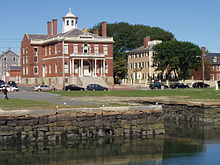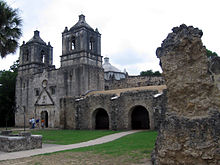National Historic Sites (United States)
National Historic Sites are protected areas of national historic significance in the United States. A National Historic Site usually contains a single historical feature directly associated with its subject. A related but separate designation, the National Historical Park, is an area that generally extends beyond single properties or buildings, and its resources include a mix of historic and sometimes significant natural features.
As of 2012, there are 46 National Historical Parks and 78 National Historic Sites. Most National Historical Parks and National Historic Sites are managed by the National Park Service. Some federally designated sites are privately owned, but are authorized to request assistance from the National Park Service as affiliated areas.
As of October 15, 1966, all historic areas, including National Historical Parks and Historic Sites, in the National Park System are automatically listed on the National Register of Historic Places. There are also about 80,000 National Register of Historic Places sites, the large majority of which are neither owned nor managed by the National Park Service. Of these, about 2400 have further been designated as National Historic Landmark sites.
National Historic Sites

National Historic Sites are federally owned and administered. The proper noun term "National Historic Site" refers to federally staffed properties, usually federally owned. There are currently 90 National Historic Sites, of which 78 are official NPS units, 11 are NPS affiliated areas, one is managed by the US Forest Service, and one by the Bureau of Land Management. Some other federally administered sites are National Historical Parks.
Derived from the Historic Sites Act of 1935, a number of Historic Sites were established by United States Secretaries of the Interior, but most have been authorized by acts of Congress. In 1937, the first National Historic Site was created in Salem, Massachusetts in order to preserve and interpret the maritime history of New England and the United States.
There is one International Historic Site in the US park system, a unique designation given to Saint Croix Island, Maine, on the New Brunswick border. The title, given to the site of the first permanent French settlement in America, recognizes the influence that has had on both Canada and the United States. The National Park Service does not distinguish among these designations in terms of their preservation or management policies.

National Historical Parks

In the United States, sites are "historic", while parks are "historical". The National Park Service explains that a site can be intrinsically historic, while a park is a modern legal invention. As such, a park is not itself "historic", but can be called "historical" when it contains historic resources. It is the resources which are historic, not the park.[1]
Klondike Gold Rush International Historical Park was formally established in 1998 by the United States and Canada, the centennial of the gold rush it commemorates. The park comprises Klondike Gold Rush National Historical Park in Washington and Alaska, and Chilkoot Trail National Historic Site in British Columbia. It was this trail which so many prospectors took to fortunes in the Klondike River district of Yukon.
See also
References
- ^ U.S. National Park Service, Headquarters Office, Washington, DC. Personal letter.

